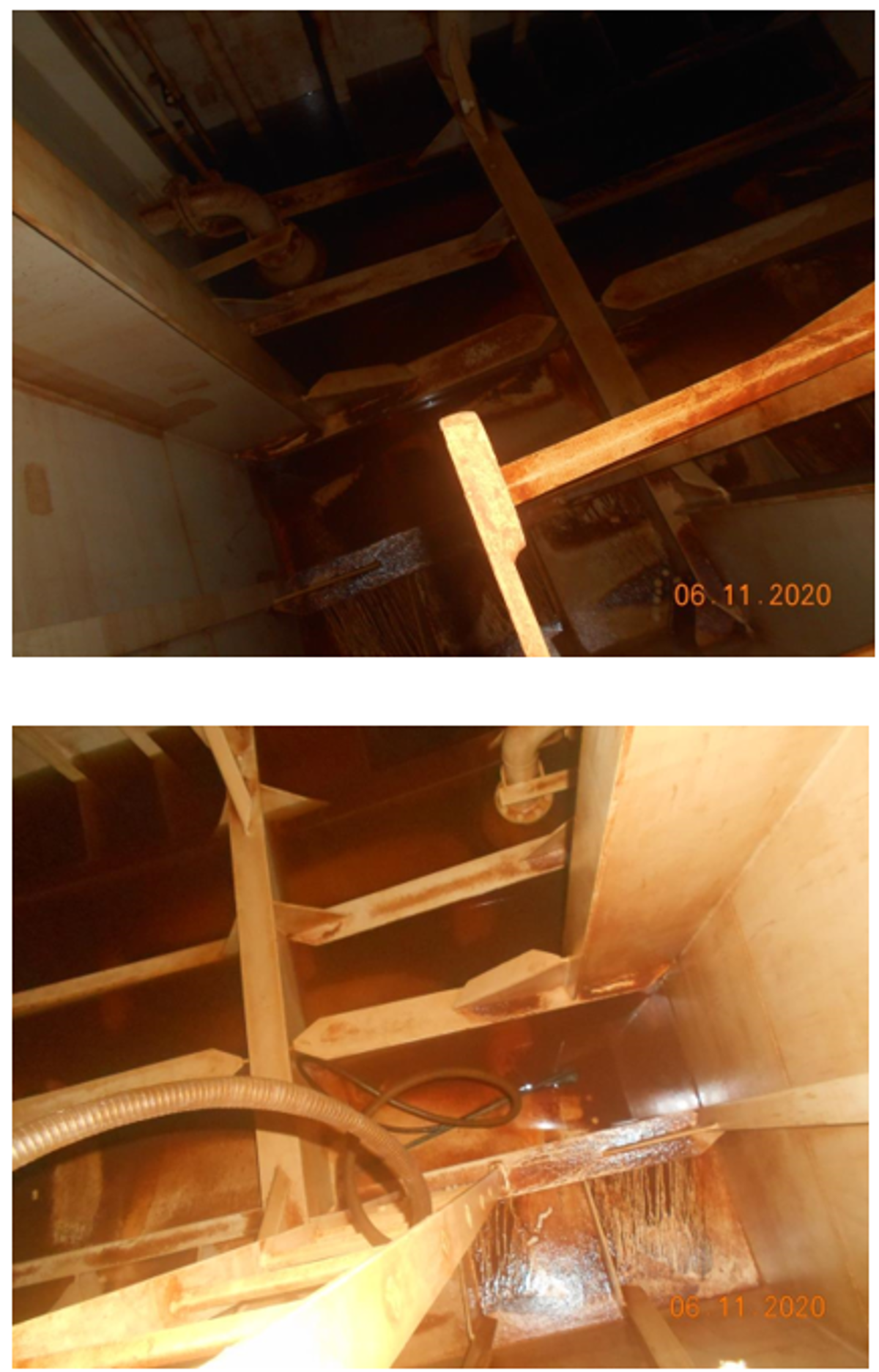Sludge accumulation in fresh water tank
- Safety Flash
- Published on 23 February 2021
- Generated on 11 January 2026
- IMCA SF 06/21
- 2 minute read
Jump to:
Inspection of a fresh water tank found it had accumulated a significant amount of sludge; such build-up of sludge in fresh water tanks, hoses and pipes can lead to the prevalence of bacteria that may pose a health hazard.
What happened?
During inspection of a fresh water tank, it was discovered that there was significant sludge accumulation in the tank.
Based on the condition of the tank, it was seen as more than likely that other tanks would be similarly affected and that the cause was due to a common source of water.
Sludge build-up in fresh water tanks, hoses and pipes can lead to the prevalence of bacteria that may pose a health hazard.

Sludge accumulation
What went wrong?
Our member understood that the condition was as a result of the quality of the water obtained from port.
There was an accumulation of sedimentation and of organic and inorganic matter over a period of time.
Actions
- Immediate inspection of other fresh water tanks to ensure potability of water supply, and subsequent maintenance (taking note of the requirement for Confined Space Entry permits to work) was arranged as soon as reasonably practicable.
- Internal tank inspection for signs of possible contamination and debris every 6 months for potable water and every 12 months for non-potable water.
- Disinfection of hoses as a routine measure every 6 months, or whenever any contamination is suspected. Our member flushed hoses thoroughly through and completely filled them with a solution of 50 ppm residual free chlorine, which was then allowed to stand for a period of at least 1 hour before the hoses were emptied and re-stowed.
Related Safety Flashes
-
IMCA SF 28/18
18 December 2018
-
IMCA SF 31/17
15 December 2017
-
IMCA Safety Flashes summarise key safety matters and incidents, allowing lessons to be more easily learnt for the benefit of the entire offshore industry.
The effectiveness of the IMCA Safety Flash system depends on the industry sharing information and so avoiding repeat incidents. Incidents are classified according to IOGP's Life Saving Rules.
All information is anonymised or sanitised, as appropriate, and warnings for graphic content included where possible.
IMCA makes every effort to ensure both the accuracy and reliability of the information shared, but is not be liable for any guidance and/or recommendation and/or statement herein contained.
The information contained in this document does not fulfil or replace any individual's or Member's legal, regulatory or other duties or obligations in respect of their operations. Individuals and Members remain solely responsible for the safe, lawful and proper conduct of their operations.
Share your safety incidents with IMCA online. Sign-up to receive Safety Flashes straight to your email.